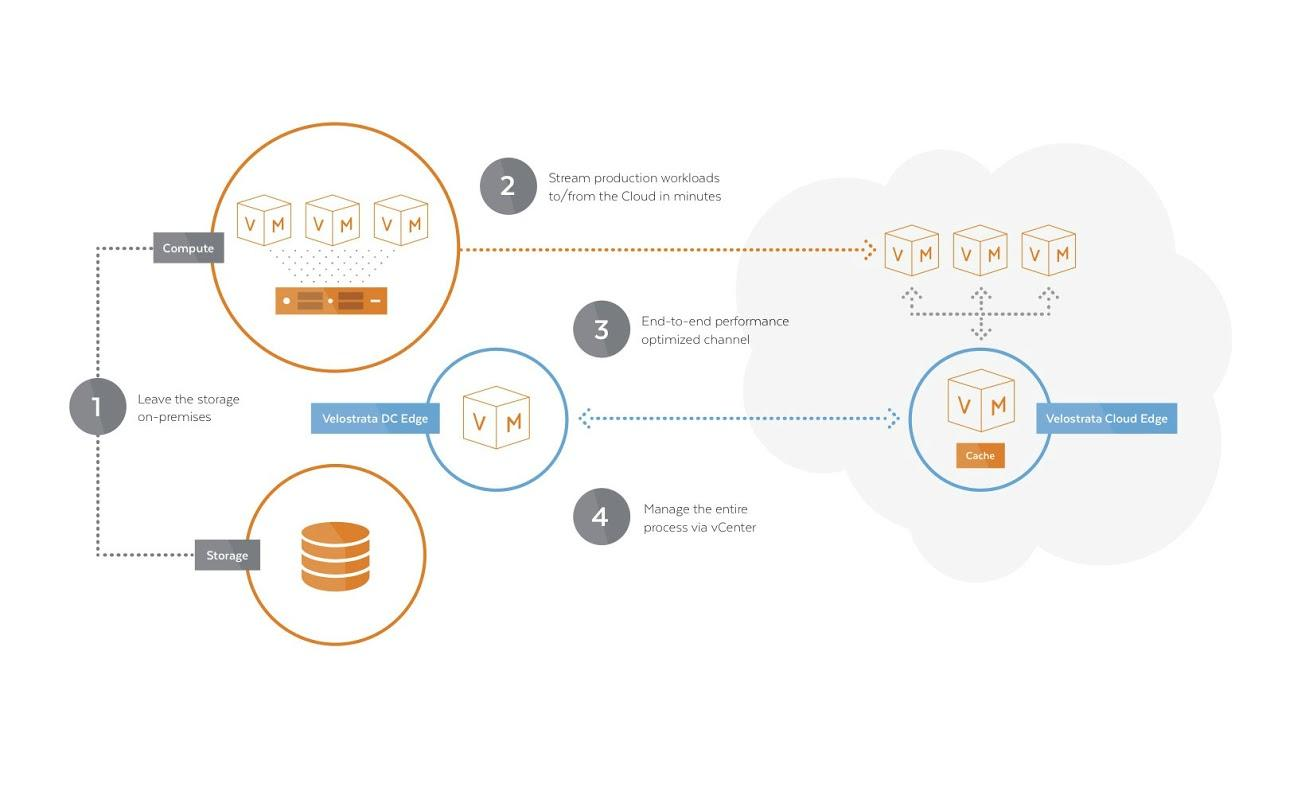Velostrata Exits Stealth Mode With $14 million Series A
Velostrata emerged from stealth today, announcing a beta version of their product which brings WAN acceleration to the virtual machine. The company announced a $14 million series A funding round, with funding from Norwest Venture Partners and Greylock Partners.
The company’s goal is to help organisations move workloads into the cloud without having to move all the associated storage at the same time. Instead, Velostrata streams the required data into the cloud, providing data just-in-time for the compute instances. Data is cached on a Velostrata Cloud Edge virtual appliance to reduce latency from compute to storage, and data is written back to a customer’s data-centre in the background through a process known as write-back caching.
I spoke to CEO and co-founder of Velostrata Issy Ben-Shaul about the product. “We can take a VM image running on-site and we know how to stream it over the network, rather than moving the entire image,” he said. “We have a small (2MB) proprietary boot image, and we only move the data that is needed to boot the image. Then, we only load the data that is accessed. It doesn’t matter how big the image is.”

Customers can spin up new compute instances quickly, and provide applications close to users, while the data stays back in the data-center. The appliance's write-back caching technology pushes data changes back to the source storage while continuing to serve up data to virtual machines running in the cloud. Customers can also take advantage of cloud compute pricing and dynamic capacity without having to completely re-architect their applications.
Ben-Shaul and his co-founder Ady Degany have a good track record in related technologies: Ben-Shaul was CTO and co-founder of Actona, a WAN optimization company acquired by Cisco in 2004. Ben-Shaul later co-founded Wanova, a desktop virtualization company, acquired by Microsoft in 2012. Prior to StorSimple, Degany was responsible for product strategy and direction at Wanova.
The technology is best suited to workloads with smaller active working sets that benefit from de-duplication. The performance of the product is largely down to a combination of network bandwidth between the customer’s storage and the cloud and the recovery point objective (RPO) for data written back from the Cloud Edge appliance. “Each Cloud Edge appliance can sustain between 6,000 and 10,000 IOPS and maybe 50 VMs with an RPO of 30 minutes,” Ben-Shaul says. “That would need 20Mb/s of network bandwidth for the appliance.” Customers who host their systems at co-location providers with large-bandwidth connections into cloud providers, such as the AWS DirectConnect service, would find this easier than customers at the end of an ADSL link.
Velostrata will be appearing at VMworld next week, and will be sponsoring AWS:reInvent later in the year, which highlights their Microsoft Azure.
Update: The original title of this article said Velostrata received funding of $10 million instead of $14 million. I apologise for the error.
This article first appeared in Forbes.com here.